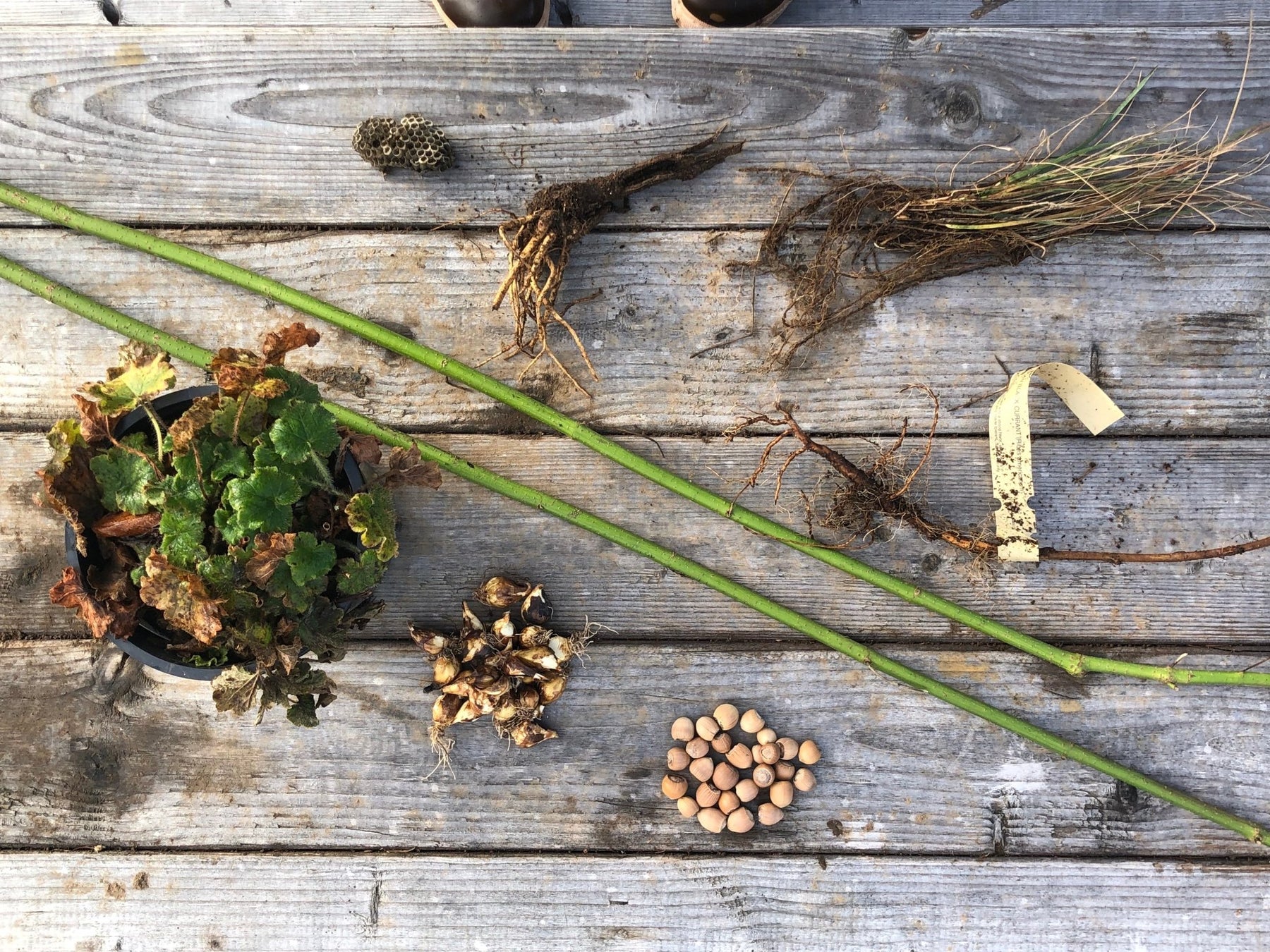
Winter Hedgework

As the end of the year closes in, we would like to thank you – our customer-friends – for your support. The work you do to bring interesting masterpieces and fragments of nature to our shared surroundings makes the world better. It really does. Every flower that feeds some odd little native bee, every bunchy grass that sticks it’s neck up in defiance of homogenized landscapes, makes the spaces we all inhabit richer and more interesting.
In that same spirit, we’ve been even busier than usual with some expanded agroforestry projects on our farm. While we talk (endlessly) about meadows, we’ve also been planting trees on the farm since the moment we had the title in hand. Mostly we’ve focused on building an orchard of odd French and Spanish cider apple varieties – all literally grafted onto the rootstocks of native crabapple and hawthorn.
More recently we’ve increased our tree-planting efforts through a partnership with the Whidbey Island and Snohomish County Conservation Districts. Central to this collaboration has been a massive new hedgerow planting on the farm, consisting of dozens of plant species – including many we’ll be harvesting seed, fruit, and propagules from in the future to share with the world: big leaf maple, garry oak, multiple species of willows, elderberries, aronia, ninebark, hazelnut, black cap raspberries, huckleberries, serviceberry, dogwoods, man-root, cow parsnip, odd native grasses, massive amounts of camas and other bulb-forming flowers. We’ve designed it to grow into a dense thicket of wild things. There are even stonework snake hibernacula (overwintering structures) built within it.
Hedgerows are remarkable conservation features, that merit an entire ecological treatise. They occur both as thin remnants of ancient forests between arable fields across the world, and as constructed plant communities established through intentional planting and management. They function as biological corridors. They are bulwarks against erosion. They store massive amounts of carbon in dense root systems and above ground woody biomass. They’re designed and built for the centuries, for the people and things that will come after us – as all things should be.

